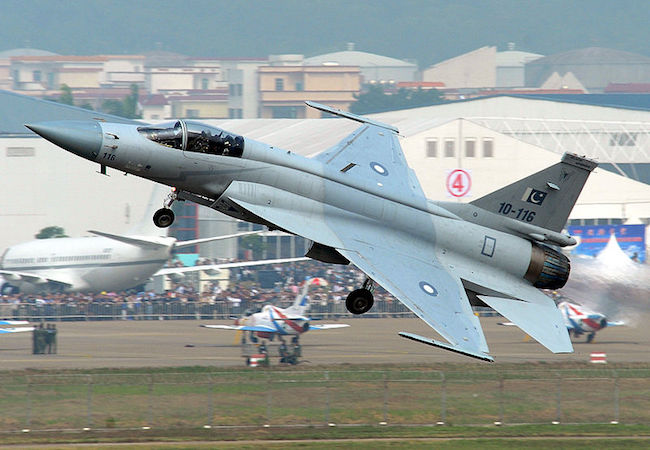
By Haris Bilal Malik
Pakistan’s conventional force posture faces severe challenges arising from India’s conventional military modernization and its proactive strategies, which India claims would likely stay below Pakistan’s nuclear threshold. India enjoys a substantial conventional military superiority over Pakistan. India’s aspiration to dominate the region by carrying out an offensive military modernization program is in large part ensured by enhancement of its counter force conventional capabilities. This has served as one of the most destabilizing factors that affect the strategic stability of the South Asian region. Moreover, the provocative counter force conventional developments by India are adversely impacting the security, stability, and strategic equilibrium within the region. Over the last few years, all these factors have provoked Pakistan to revisit and strengthen its deterrence posture at the conventional level.
In recent years, India has considerably enhanced its offensive conventional posture against Pakistan. The notions of ‘preemptive surgical strikes’ evident in the proactive war doctrines of the 2017 Joint Doctrine of the Indian Armed Forces (JDIAF) and the 2018 Land Warfare Doctrine (LWD) are a testimony to this trend. These assumptions are essentially based on proactive strategies and indirect threats of initiating preemptive strikes against Pakistan starting at the conventional level. Moreover, a highly offensive military modernization program of India is based on developing and acquiring new weapon technologies to form the basis of its counter force conventional capabilities. These include; precision-guided munitions, acquisition of enhanced air defence shields, stand-off weapons, and procurement of advanced fighter jets. This demonstrates India’s objectives of achieving escalation-dominance throughout the region at the conventional level.
India’s fixation with dominating the escalation ladder at the conventional level was even more evident in the February 2019 Pulwama-Balakot crisis. Under its notion of limited war at the conventional level, India threatened Pakistan with a ‘preemptive splendid first strike’ and had reportedly entered Pakistan’s air space with fighter jets. This led to a dangerous escalation of hostilities at the political and military levels between both countries. Many experts assumed that with such an intrusion, India might have crossed Pakistan’s nuclear threshold. Pakistan’s full spectrum deterrence posture which falls within the ambit of minimum credible deterrence remained applicable during the crisis. If both countries had escalated further, the situation might have turned into an all-out nuclear war. Nevertheless, Pakistan’s resort to respond to India’s aggression turned out to be an ‘appropriate response’ based on its credibility at the conventional level.
It is worth mentioning here that the modern conventional weapon systems could have a comparable counter force deterrent value which was earlier exclusively limited to nuclear weapons. This implies that in the future, wars with or without the limited use of nuclear weapons could occur. In this regard, India’s long hyped ‘Cold Start Doctrine’ (CSD), despite its fate and practicality in a crisis situation, still serves as an important provocative conventional war doctrine. In response to potential Indian proactive war strategies, Pakistan has been compelled to develop its low-yield, tactical range missile ‘Nasr’ capable of delivering both conventional and nuclear warheads. This ‘battlefield’ missile is regarded as the last resort option against Indian provocative limited aggression. Such preparedness by Pakistan has no doubt enhanced and strengthened the posture of full-spectrum deterrence at both conventional and unconventional levels. At the same time, given the limited resources, it also serves as a cost-effective neutralizing factor against India’s proactive war strategies. Furthermore, it complements Pakistan’s conventional forces, neutralizes India’s growing technological edge, and bridges the conventional disparity between the two countries.
In the same vein, to overcome ever-increasing conventional threats from India, Pakistan needs to actively enhance its counterforce conventional capabilities with the help of indigenous developments and foreign acquisition of hi-tech defence equipment, especially from China and Russia. Furthermore, initiatives such as upgrading cruise missiles to supersonic level, provision of an advanced air defence shield, and development of unmanned aerial vehicles and latest-generation fighter jets are needed to be materialized. This would further enable Pakistan with a much better position to respond to India’s aggression at the conventional level specifically. Also, Pakistan would be equipped with a broad range of response options to Indian aggressions, hence simultaneously increasing the nuclear threshold. Pakistan would not be forced to retaliate with nuclear weapons as the most reliable response to limited conventional aggression by India. Therefore, Pakistan’s credible conventional deterrent would likely decrease the chances of a conventional confrontation in the South Asian strategic landscape.
Hence at present, the persistent conventional asymmetry in South Asia primarily based on India’s enhanced counter force military modernization and revisions of its conventional war doctrines serves as a severe challenge. Being threatened by this, Pakistan would be provoked to revisit its conventional approach vis-à-vis India and further strengthen its conventional capabilities. Such an equation would likely keep deterrence stability of the region under constant stress as there could be a possibility of a limited conventional war between two nuclear-armed adversaries staying below their nuclear thresholds. Nonetheless, the limited conventional response has become an appropriate option in the event of any conventional and sub-conventional level confrontations as evident from recent examples. In this regard, Pakistan has to be vigilant and conscious of the evolving nature of the threat spectrum in the South Asian region. Therefore, Pakistan needs to enhance its conventional deterrence as a part of its overall deterrence posture. This could justifiably be done with a re-assessment and enhancement of the full spectrum deterrence at the conventional level.
Haris Bilal Malik works as a Research Associate at Strategic Vision Institute (SVI) Islamabad, Pakistan.




